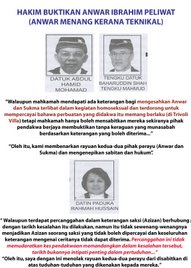As an offering, this one is definitely the highlight for a company that has well and truly come back from the ropes. Indeed, it’s all the more impressive given the fact that it is unchartered waters that’s being treaded.

Say hello then to the Proton Exora, the country’s first fully homegrown MPV. As the third part of the comeback, following on the successes of the Persona and Saga, it’s quite the focus piece, and though detractors will continue to do the usual, this is very much a vehicle that showcases what Proton is all about these days.
As a platform, there’s nothing radical about it - a seven-seater MPV isn’t exactly a new type. But it is clever enough as an offering, rolls in at an excellent price point and incorporates enough winsome features that there surely must be little to complain about, and there really isn’t, but more as we go along.

At the point of launch, two versions of the Exora go on sale - the 1.6l AT Medium-line and 1.6l AT High-line, and both only come in automatic versions. There’s a manual variant on the cards, slated for launch later in the year.
Visually, the Exora is best described as elegant; shades of the Toyota Wish and Honda Stream, benchmarks in the development of the vehicle, as well as the Mitsubishi Grandis, can be traced in the general lines and flow, but has enough of its own identity, helped by a prominent enough looking front end and a tail that has one of the best looking tail-lamp clusters in recent memory.

The sleek vehicle, which has a coefficient drag of 0.33Cd, looks sizeable, and once you get inside, you’ll find it is indeed quite the spacious offering it promises to be. There’s plenty of space, and the legroom on the second row is rather good. The rear doors open to a maximum angle of 80 degrees, making for easier ingress and egress for passengers.

As for seating layout combinations, the Exora does pretty well in this regard too, with six different seat folding configurations, and both the second and third row seats can be fully flat-folded to offer a rather convincing load-carrying space. Ingress to the third row is by means of a single-lever seat-folding mechanism on the second row, and in use this getting in and out to the third row is accomplished easily enough.

In terms of trim, the Mediumline version comes with a simple grey interior with fabric seats, whereas the High-line variant features leather and Alcantara-finished seats in light grey. Surprisingly, I thought the fabric seats offered a better visual perspective, both in terms of shade and texture.
Much attention has been paid to reducing the noise levels in the cabin - the firewall, door panels and floor pan have soundproofing insulation, and all the pillars are injected with foam.

Mod cons are evident in the cabin - items such as 10 cup holders may seem like overkill, but better to have more than less, yes? And a nice touch is the inclusion of that is tagged a “Teh-Tarik” holder, which is a great thing for takeaways. Not new, but handy nonetheless.
In terms of safety, twin front airbags - standard in both the Medium-Line and High-line - and front seat-belt pretensioners are part of the kit, as well as ABS and EBD.

Of note is the utilisation of what is called the Body Control Module (BCM); this is the first Proton to be equipped with BCM and it offers a whole new range of options and items to enhance the vehicle’s practicality and safety. BCM offers over 20 different functions, from “follow me home lights”, programmable door locking configurations and wiper speeds to automatic hazard light activation during emergency braking from above 96kmh, among others.
Elsewhere, there are plenty of features on call here, and the chart below lists the differences in the variants:

Powering the Exora is the tried and tested 1.6l Campro CPS engine, here offering 125bhp at 6,500rpm and a maximum torque of 150Nm at 4,500rpm. Placed in a vehicle that weighs in at 1,422 (M-line) and 1,442kg (H-line), the result isn’t ever going to be breathtaking, but surprisingly the Exora goes about its business well enough.

As is the case with previews, there was very little time spent with the car proper from a driving point of view, but first impressions reveal a vehicle that is as comfortable and pliant as promised. Ride comfort is good, and offers enough softness without being overly mushy. A quick ride seated on the third row showed very little undue modulation, with only large dips causing some discomfort.

From a performance perspective, the 1.6l pot is adequate enough for the job, under most conditions - it isn’t exactly a sprinter on take-up, and the block does tend to be a little shouty when pushed, but once you get moving the vehicle pulls along decently, and at cruising levels the car feels decently tractable.
As for fuel consumption figures, the claim is 7.2l per 100km at a steady state of 90kmh, while for a combined cycle it is 9l per 100km. We’ll be able to tell you more about how well it does in terms of actual fuel economy - as well as operation over a wider range - when a full road-test is done.

The journey from design to completion of the Exora has taken a mere 18 months, at a cost of RM480mil, and with more than 2,500 bookings so far, it is very much an achievement to be proud of.
The pricing for the Exora Medium-Line is RM69,998, while the High-Line goes for RM75,998 (both on-the-road, without insurance). Six colour choices are available - Pyrite Brown, Gaia Blue, Genetic Silver, Tranquillity Black, Blue Haze and Solid White - and the vehicle comes with an extended warranty of 175,000km or five years, whichever comes first.
tunku : buy malaysian product.proton boleh.













 Malaysian Ringgit Converter
Malaysian Ringgit Converter
























1 comment:
For the price and size I would say bravo Proton! Price is about that of Toyota Avanza 1.6 but with a better noise insulation especially since the pillars are injected with foam, I would say Exora would be a better bargain. I fancy the seats too since they could be folded flat and would make it a very practical MPV.
Post a Comment